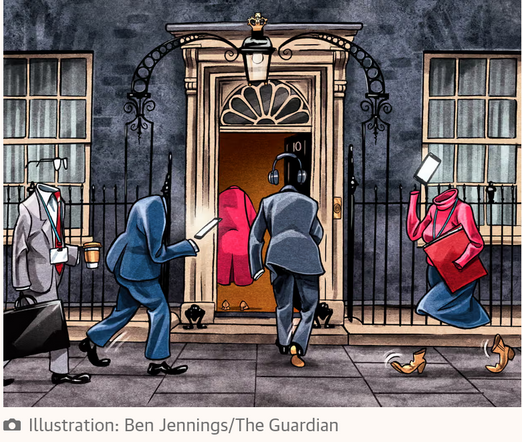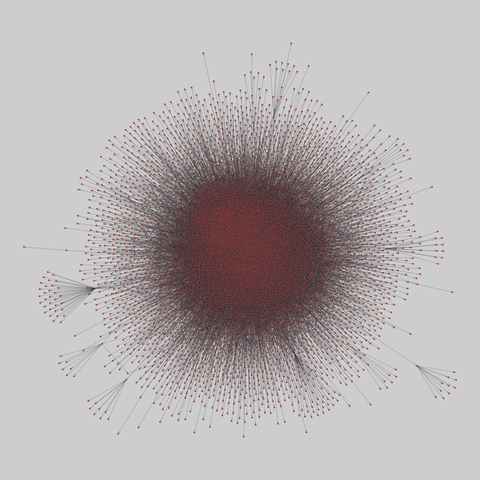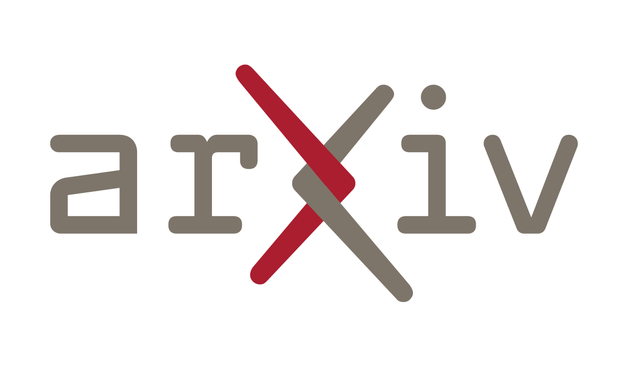Streaming Sequence-to-Sequence Learning with Delayed Streams Modeling
Neil Zeghidour, Eugene Kharitonov, Manu Orsini, V\'aclav Volhejn, Gabriel de Marmiesse, Edouard Grave, Patrick P\'erez, Laurent Mazar\'e, Alexandre D\'efossez
https://arxiv.org/abs/2509.08753
Bidirectional Representations Augmented Autoregressive Biological Sequence Generation:Application in De Novo Peptide Sequencing
Xiang Zhang, Jiaqi Wei, Zijie Qiu, Sheng Xu, Zhi Jin, ZhiQiang Gao, Nanqing Dong, Siqi Sun
https://arxiv.org/abs/2510.08169
Solvability of Infinite Systems of Nonlinear Caputo Fractional Differential equations in generalized Hahn Sequence Space
Khurshida Parvin, Bipan Hazarika, Awad A. Bakery
https://arxiv.org/abs/2509.06959
COSMOS-Web galaxy groups: Evolution of red sequence and quiescent galaxy fraction
Greta Toni, Matteo Maturi, Gianluca Castignani, Lauro Moscardini, Ghassem Gozaliasl, Alexis Finoguenov, Sina Taamoli, B. Hollis Akins, C. Rafael Arango-Toro, M. Caitlin Casey, E. Nicole Drakos, L. Andreas Faisst, Carter Flayhart, Maximilien Franco, Fabrizio Gentile, Ali Hadi, Santosh Harish, Hossein Hatamnia, Olivier Ilbert, Shuowen Jin, S. Jeyhan Kartaltepe, Ali Ahmad Khostovan, M. Anton Koekemoer, Gavin…
Scots, as a language, is rich in insults; and an ancient one is 'toom (empty) tabard' for a worthless person -- an epithet most notably applied to John de Balliol, who served as King of Scots during the middle period of the wars of independence.
It's interesting to see Grauniad cartoonist Ben Jenkins apply the idea to #Starmer's cabinet.
Testing the Role of Merging Binaries in the Formation of the Split Main Sequence in Young Clusters
Nate Bastian, Sebastian Kamann, Florian Niederhofer, Sara Saracino
https://arxiv.org/abs/2509.07708
To Sink or Not to Sink: Visual Information Pathways in Large Vision-Language Models
Jiayun Luo, Wan-Cyuan Fan, Lyuyang Wang, Xiangteng He, Tanzila Rahman, Purang Abolmaesumi, Leonid Sigal
https://arxiv.org/abs/2510.08510
Equivalence of continuous- and discrete-variable gate-based quantum computers with finite energy
Alex Maltesson, Ludvig Rodung, Niklas Budinger, Giulia Ferrini, Cameron Calcluth
https://arxiv.org/abs/2510.08546
The blow-up of a singularity at the module of derivations
Paul Barajas, Enrique Ch\'avez-Mart\'inez, Agust\'in Romano-Vel\'azquez
https://arxiv.org/abs/2510.07607
Recursive Aperture Decoded Ultrasound Imaging (READI) With Estimated Motion-Compensated Compounding (EMC2)
Tyler Keith Henry, Darren Dahunsi, Randy Palamar, Negar Majidi, Mohammad Rahim Sobhani, Roger Zemp
https://arxiv.org/abs/2509.08781
PLUM: Adapting Pre-trained Language Models for Industrial-scale Generative Recommendations
Ruining He, Lukasz Heldt, Lichan Hong, Raghunandan Keshavan, Shifan Mao, Nikhil Mehta, Zhengyang Su, Alicia Tsai, Yueqi Wang, Shao-Chuan Wang, Xinyang Yi, Lexi Baugher, Baykal Cakici, Ed Chi, Cristos Goodrow, Ningren Han, He Ma, Romer Rosales, Abby Van Soest, Devansh Tandon, Su-Lin Wu, Weilong Yang, Yilin Zheng
Timeline Problems in Temporal Graphs: Vertex Cover vs. Dominating Set
Anton Herrmann, Christian Komusiewicz, Nils Morawietz, Frank Sommer
https://arxiv.org/abs/2510.08124 https:…
Trust-Region Method for Optimization of Set-Valued Maps Given by Finitely Many Functions
Suprova Ghosh, Debdas Ghosh, Christiane Tammer, Xiaopeng Zhao
https://arxiv.org/abs/2509.07836
Today I found out that ffmpeg can process an input image sequence not only using the printf-style pattern (i.e. frame.�d.jpg) but also using a glob pattern. It needs the parameter "-pattern_type glob" before your -i argument.
The advantage of glob patterns is the fact that it will skip over missing numbers. You can use this to turn a bunch of numbered photos from your location scouting into a movie clip that you can show to the client or upload as a preview to an asset libr…
Real-time CBCT reconstructions using Krylov solvers in repeated scanning procedures
Fred Vickers Hastings, S M Ragib Shahriar Islam, Malena Sabat\'e Landman, Sepideh Hatamikia, Carola-Bibiane Sch\"onlieb, Ander Biguri
https://arxiv.org/abs/2509.08574
Decoding the dark proteome: Deep learning-enabled discovery of druggable enzymes in Wuchereria bancrofti
Shawnak Shivakumar, Jefferson Hernandez
https://arxiv.org/abs/2510.07337
Learning What's Missing: Attention Dispersion and EMA Stabilization in Length Generalization
P\'al Zs\'amboki, Benjamin Levi, David Ansel Josef Smith, Mitansh Kagalwala, Arlington Kell, Samuel Liechty, Cong Wang
https://arxiv.org/abs/2510.08341
gnutella: Gnutella p2p networks (2002)
A sequence of 9 snapshots of the Gnutella peer-to-peer file sharing network from 5-31 August 2002. Nodes are hosts in the Gnutella network topology and edges are connections between them.
This network has 6301 nodes and 20777 edges.
Tags: Technological, Peer-to-peer, Unweighted
https://
CAZAC sequence generation of any length with iterative projection onto unit circle: principle and first results
Karine Amis, Eloi Boutillon, Emmanuel Boutillon
https://arxiv.org/abs/2509.05097
The Star-forming Main Sequence and Bursty Star-formation Histories at $z>1.4$ in JADES and AURORA
Leonardo Clarke, Alice E. Shapley, Natalie Lam, Michael W. Topping, Gabriel B. Brammer, Ryan L. Sanders, Naveen A. Reddy, Shreya Karthikeyan
https://arxiv.org/abs/2510.06681
Chain-of-Trigger: An Agentic Backdoor that Paradoxically Enhances Agentic Robustness
Jiyang Qiu, Xinbei Ma, Yunqing Xu, Zhuosheng Zhang, Hai Zhao
https://arxiv.org/abs/2510.08238
Totally normal night:
1. Scratching the cat.
2. The first continuous sleep, ending with a #nightmare. I've dreamt that my first return train was delayed, and I'm likely to be stuck in Głogów. On top of that, the train looked looked like a nightmare contraption, with a sequence of cubic compartments with no seats, and weirdly shaped holes in the walls instead of doors.
3. Toilet.
4. Checking blood sugar, just in case.
5. Looking for a spot in the bed that's free of sweat.
6. Scratching the cat.
7. A series of nightmares. The most interesting one was about getting up in the morning, in middle of a gale. The mains voltage was so low I couldn't turn the lights on, and instead of getting myself ready to go out, I was trying hard to measure it, helping myself with a flashlight.
My working theory is that these are side effects of my current medication. One week to go.
Sequence-Based Deep Learning for Handover Optimization in Dense Urban Cellular Network
Muhammad Kabeer, Rosdiadee Nordin, Mehran Behjati, Lau Sian Lun
https://arxiv.org/abs/2510.02958
Lossless Vocabulary Reduction for Auto-Regressive Language Models
Daiki Chijiwa, Taku Hasegawa, Kyosuke Nishida, Shin'ya Yamaguchi, Tomoya Ohba, Tamao Sakao, Susumu Takeuchi
https://arxiv.org/abs/2510.08102
System size and boundaries determine the patterning dynamics of attracting active particles
Jan Rombouts, Michael L Zhao, Alexander Aulehla, Anna Erzberger
https://arxiv.org/abs/2509.08533
Optimal Smooth Coverage Trajectory Planning for Quadrotors in Cluttered Environment
Duanjiao Li, Yun Chen, Ying Zhang, Junwen Yao, Dongyue Huang, Jianguo Zhang, Ning Ding
https://arxiv.org/abs/2510.03169
The Keychain Problem: On Minimizing the Opportunity Cost of Uncertainty
Ramiro N. Deo-Campo Vuong, Robert Kleinberg, Aditya Prasad, Eric Xiao, Haifeng Xu
https://arxiv.org/abs/2509.06187
DeepStream: Prototyping Deep Joint Source-Channel Coding for Real-Time Multimedia Transmissions
Kaiyi Chi, Yinghui He, Qianqian Yang, Zhiping Jiang, Yuanchao Shu, Zhiqin Wang, Jun Luo, Jiming Chen
https://arxiv.org/abs/2509.05971
Customizing the Inductive Biases of Softmax Attention using Structured Matrices
Yilun Kuang, Noah Amsel, Sanae Lotfi, Shikai Qiu, Andres Potapczynski, Andrew Gordon Wilson
https://arxiv.org/abs/2509.07963
Retrieving the structure of probabilistic sequences from EEG data during the goalkeeper game
P. R. Cabral-Passos, P. S. Azevedo, V. H. Moraes, B. L. Ramalho, A. Duarte, C. D. Vargas
https://arxiv.org/abs/2510.06344
🔊 #NowPlaying on #BBCRadio3:
#Unclassified
- Sherelle's Listening Chair
Elizabeth Alker serves up a sublime sequence of ambient and experimental music. Plus British DJ-producer Sherelle shares a more downtempo side to her musical personality.
Relisten now 👇
https://www.bbc.co.uk/programmes/m002cbtz
Canonicalization of the E value from BLAST similarity search -- dissimilarity measure and distance function for a metric space of protein sequences
Boryeu Mao
https://arxiv.org/abs/2509.06849
Revisiting scaling limits for critical inhomogeneous random graphs with finite third moments
Louigi Addario-Berry, Sasha Bell, Prabhanka Deka, Serte Donderwinkel, Sourish Maniyar, Minmin Wang, Anita Winter
https://arxiv.org/abs/2509.08439
Linear Recurrences from Counting Schreier-Type Multisets
Hung Viet Chu, Yubo Geng, Julian King, Steven J. Miller, Garrett Tresch, Zachary Louis Vasseur
https://arxiv.org/abs/2509.05158
Probing accretion and stellar properties in the Orion Nebula with VLT/X-Shooter
L. Piscarreta, G. Beccari, R. A. B. Claes, C. F. Manara, H. M. J. Boffin, T. Jerabkova, B. Ercolano, A. Natta, S. E. van Terwisga
https://arxiv.org/abs/2509.08784
Experimental demonstration of genuine quantum information transmission through completely depolarizing channels in a superposition of cyclic orders
Yaxin Wang, Linxiang Zhou, Tianfeng Feng, Hanlin Nie, Ying Xia, Tianqi Xiao, Juntao Li, Vlatko Vedral, Xiaoqi Zhou
https://arxiv.org/abs/2510.07127
The Splitting of Generalisations of the Fadell-Neuwirth short exact sequence
Daciberg Lima Gon\c{c}alves, John Guaschi, Carolina de Miranda e Pereiro
https://arxiv.org/abs/2509.02707

The Splitting of Generalisations of the Fadell-Neuwirth short exact sequence
We study some generalisations to mixed braid groups of the Fadell-Neuwirth short exact sequence and the possible splitting of this sequence. In certain cases, we determine conditions under which the projection from the mixed braid group $B_{n_{1},\ldots,n_{k}}(M)$ to $B_{n_{1},\ldots, n_{k-q}}(M)$ admits a section, where $M$ is either the torus or the Klein bottle, $n_{1}, \ldots, n_{k},q \in \mathbb{N}$, and $1\leq q \leq k-1$. For $k\geq 2$ and $q=k-1$, we show that this projection admits a s…
caida_as: CAIDA AS graphs (2004-2007)
A sequence of 122 network snapshots denoting Autonomous System (AS) relationships on the Internet, from 2004-2007, inferred using the Serial-1 method from RouteViews BGP table snapshots and a set of heuristics.
This network has 25696 nodes and 105332 edges.
Tags: Technological, Communication, Unweighted, Temporal
DeRainMamba: A Frequency-Aware State Space Model with Detail Enhancement for Image Deraining
Zhiliang Zhu, Tao Zeng, Tao Yang, Guoliang Luo, Jiyong Zeng
https://arxiv.org/abs/2510.06746
Planning from Point Clouds over Continuous Actions for Multi-object Rearrangement
Kallol Saha, Amber Li, Angela Rodriguez-Izquierdo, Lifan Yu, Ben Eisner, Maxim Likhachev, David Held
https://arxiv.org/abs/2509.04645
A Comparative Analysis of Contextual Representation Flow in State-Space and Transformer Architectures
Nhat M. Hoang, Do Xuan Long, Cong-Duy Nguyen, Min-Yen Kan, Luu Anh Tuan
https://arxiv.org/abs/2510.06640
Crosslisted article(s) found for astro-ph.SR. https://arxiv.org/list/astro-ph.SR/new
[1/1]:
- Comparing LSTM-Based Sequence-to-Sequence Forecasting Strategies for 24-Hour Solar Proton Flux Pr...
Kangwoo Yi, Bo Shen, Qin Li, Haimin Wang, Yong-Jae Moon, Jaewon Lee, Hwanhee Lee
Hybrid Sequential Quantum Computing
Pranav Chandarana, Sebasti\'an V. Romero, Alejandro Gomez Cadavid, Anton Simen, Enrique Solano, Narendra N. Hegade
https://arxiv.org/abs/2510.05851
Crosslisted article(s) found for astro-ph.SR. https://arxiv.org/list/astro-ph.SR/new
[1/1]:
- Comparing LSTM-Based Sequence-to-Sequence Forecasting Strategies for 24-Hour Solar Proton Flux Pr...
Kangwoo Yi, Bo Shen, Qin Li, Haimin Wang, Yong-Jae Moon, Jaewon Lee, Hwanhee Lee
Evolutionary Profiles for Protein Fitness Prediction
Jigang Fan, Xiaoran Jiao, Shengdong Lin, Zhanming Liang, Weian Mao, Chenchen Jing, Hao Chen, Chunhua Shen
https://arxiv.org/abs/2510.07286
Why Stop at Words? Unveiling the Bigger Picture through Line-Level OCR
Shashank Vempati, Nishit Anand, Gaurav Talebailkar, Arpan Garai, Chetan Arora
https://arxiv.org/abs/2508.21693
Carbon-Enhanced Dwarf Stars Are Predominantly a Halo Population
Jay Farihi, Jason L. Sanders, Sophia Lilleengen, Lewis J. Whitehouse, Denis Erkal
https://arxiv.org/abs/2509.06829
Non-periodicity of the sequence of the last nonzero digits of factorials and its applications to transcendence
Kohta Gejima, Fumichika Takamizo
https://arxiv.org/abs/2509.21948 …
Golden Ratio Growth and Phase Transitions in Chromatic Counts of Circular Chord Graphs
Rogelio N. Lopez-Bonilla, Julian Allagan, Shawn M. Langley, Angel J. Clinton
https://arxiv.org/abs/2509.05845
Lithium Abundances of Main-Sequence Stars in the Old Open Cluster NGC 188: Probes of Stellar Evolution Beyond the Solar Age
Qinghui Sun, Constantine P. Deliyannis, Bruce A. Twarog, Barbara J. Anthony-Twarog
https://arxiv.org/abs/2509.02931
SpikingBrain Technical Report: Spiking Brain-inspired Large Models
Yuqi Pan, Yupeng Feng, Jinghao Zhuang, Siyu Ding, Zehao Liu, Bohan Sun, Yuhong Chou, Han Xu, Xuerui Qiu, Anlin Deng, Anjie Hu, Peng Zhou, Man Yao, Jibin Wu, Jian Yang, Guoliang Sun, Bo Xu, Guoqi Li
https://arxiv.org/abs/2509.05276
TASP: Topology-aware Sequence Parallelism
Yida Wang (Capital Normal University, Infinigence-AI), Ke Hong (Tsinghua University, Infinigence-AI), Xiuhong Li (Infinigence-AI), Yuanchao Xu (Capital Normal University), Wenxun Wang (Tsinghua University), Guohao Dai (Infinigence-AI, Shanghai Jiao Tong University), Yu Wang (Tsinghua University)
https://
Discovery of the pre-main-sequence eclipsing binary MML 48
Y. G\'omez Maqueo Chew, L. Hebb, H. C. Stempels, F. M. Walter, D. J. James, G. A. Feiden, R. Petrucci, T. Lister, I. Baraffe, M. Brodheim, F. Faedi, D. R. Anderson, R. A. Street, C. Hellier, K. G. Stassun
https://arxiv.org/abs/2509.03831
Spiking Decision Transformers: Local Plasticity, Phase-Coding, and Dendritic Routing for Low-Power Sequence Control
Vishal Pandey, Debasmita Biswas
https://arxiv.org/abs/2508.21505



























































































